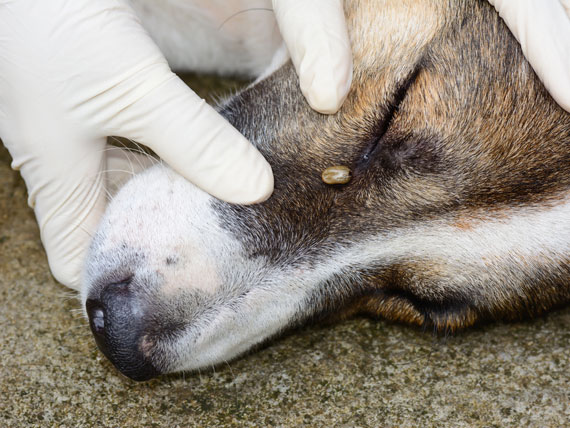Ticks are both a daily nuisance and an extreme danger for all pets who spend time outside. Whether you’re going for a walk near your home or traveling out of state for some outdoor adventure, these little bugs are hazardous. If you do find a tick on your pet, it is essential to remove it correctly. Any contact with a tick’s blood can potentially transmit infection to your animal or, in some cases, to you. Plus, improperly removing one of these pests can result in breaking the insect apart, leaving the head inside your animal’s skin. You’ll want to remove the insect as quickly as possible, but you’ll need to carefully follow instructions to reduce possible harm. We’ve included a step-by-step guide to safely removing a tick.
Step 1: Put on latex or rubber gloves to you do not have contact with the tick or the bite area. Keep a screw-top jar full of rubbing alcohol nearby, and if possible, enlist a partner to help distract and soothe the animal during the removal process.
Step 2: Using a pair of tweezers, grasp the tick as close to the animal’s skin as possible. Pull straight upwards with even, steady pressure. When the tick comes loose, place it in the jar. This will allow you to bring it to the veterinarian for testing in case the insect transmitted any disease to your pet. During the removal process, be sure to not twist or jerk the tick; this could leave parts of the insect inside the pet, and the tick could regurgitate infecting fluids.
Step 3: Use rubbing alcohol to disinfect the bite area, then wash your hands with soap and water. Remember to sterilize your tweezers with alcohol or by carefully running them over a flame. Remember to never squeeze or crush the tick, as the insect’s fluids may contain infective organisms.
Step 4: Monitor the bite area over the next few weeks for any signs of infection, such as redness or inflammation. If you suspect an infection, bring your pet – and the jarred tick – to the veterinarian for evaluation.
The best way to protect your dog from tick bites is to prevent them from happening in the first place. Many products on the market for flea treatment can also kill ticks. If you’re interested, speak to your veterinarian about the best product for your pet. Dog owners can also ensure a tick-free lawn by mowing regularly and removing weeds.
Even with the bet preparation, accidents are sometimes inevitable. If you find a tick bite on your dog, a steady removal is the best, safest thing you can do for him.
- Photo from PetMD




